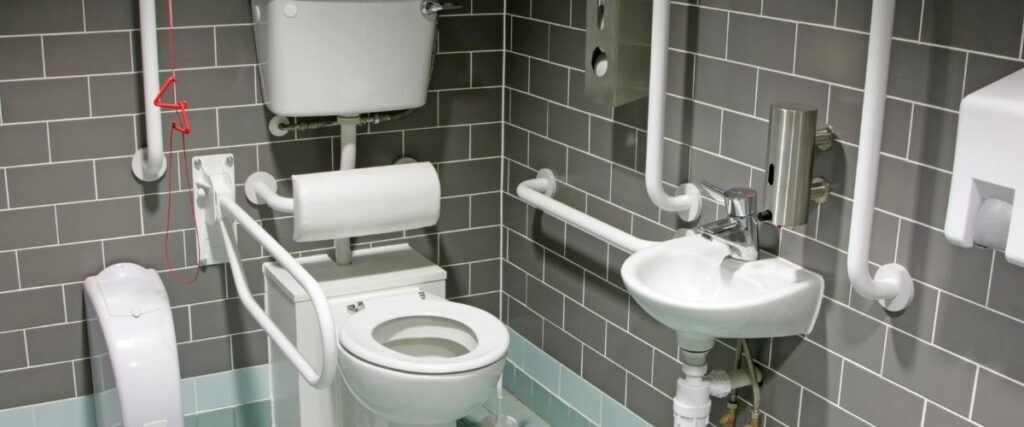
With a little bit of thought, you can bring some impressive design aspects to your accessible washrooms. Here we explore some of them…
Disabled washrooms have come a long way and it’s now easier than ever to deliver facilities that are not only functional for disabled users but that look and feel great too. The thing is, at the planning and design stage of accessible washrooms, many people focus all their attention on the dimensions of the room.
Ensuring they are complying with regulations and offering the right amount of room for users to access, manoeuvre and use these new facilities is great. However, there are many other elements to the wash space that can also need your attention.
Colour
Colour does a lot for washrooms. It stops them from being cold forgotten spaces and can bring warmth. Similarly, colour can also be instrumental in delivering a slick, contemporary aesthetic, or even following interior design cues from the rest of your building.
In a disabled washroom, grab rails are a must, and these grab rails need to be in a colour that contrasts against the wall surface. This is so that any user with visual impairment is able to make out where they are. There’s an element of creativity to be had here though, and rather than just opting for any colour that isn’t the same as your walls, you can bring in combinations and themes that work with your company’s personality. We’ve installed some really interesting combinations in the past that have elevated the end result immeasurably.
Separate rooms or large format cubicles
Sometimes disabled washrooms are completely separate rooms. It’s quite common for us during a refurb to move doorways and walls in order to create an individual stand alone disabled washroom. Sometimes this is done with blockwork walls, other times with commercial stud work. What makes this option so popular is that it delivers an extra layer of privacy to disabled users, and makes it much easier to incorporate disabled showering facilities.
However, space and budget won’t always allow for such design, and some businesses prefer to go down the route of including a full disabled washroom cubicle within their existing washrooms. These large format toilet cubicles are obviously much bigger than a regular cubicle and have to be fit-out with all the details to ensure they are fully compliant with Document M of Building Regulations. This can be done efficiently with a Doc-M toilet pack.
Thoughtful touches
Of course, it’s not all just function in a disabled washroom. There are other little touches that go a long way to making good disabled washrooms great. Hooks at a lower height are a solid move allowing wheelchair users easier access to hang their coats and bags. A shelf is also a good idea, especially within reaching distance of the toilet. This allows users with colostomy bags somewhere to place them while emptying and changing.
Adult changing tables
For a long time, there was a severe lack of adult changing tables in disabled washrooms. The height-adjustable adult changing table allows carers and family members easier access to changing users who need it. From grown children to full grown adults, without this fixture, users are left to change on the floor. Changing Places is an organisation that’s helped spearhead the rise in fully accessible washrooms and their design is now a requirement of Building Regulations in large retail premises, shopping centres, public developments and theme parks.
If you would like further advice on disabled washroom design, or to talk about our full specification, design and install services, please get in touch with one of the team on 01202 650901.

